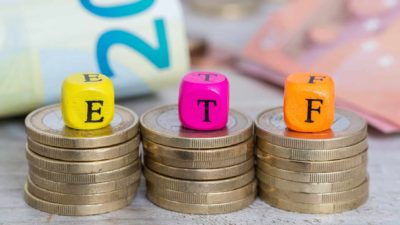So you have a $20,000 ASX share portfolio and you'd like to secure a passive income of $500 a month? That might sound like a pipedream to most investors out there.
After all, you would need your portfolio to give you a dividend yield of 30% right off the bat to secure $500 a month in passive dividend income. You should certainly be staying away from anyone or anything that is offering you that kind of yield upfront.
But a $20,000 portfolio of ASX shares can indeed offer you that kind of passive income potential. But there's a caveat. You need a good helping of two inputs to make it happen: time and compound interest.
Let's start at the beginning though. Most ASX shares pay their investors dividends. These typically come twice a year, and represent a portion of the company's profits that they are happy to reward their investors with. Some ASX shares, such as the big banks, pay massive dividends relative to the broader markets. Others pay negligible dividends or none at all.
But most do on the ASX. As such, an ASX index fund that invests in a broad slice of the entire Australian share market will typically give investors a significant stream of passive dividend income.
Dividends come in all shapes and sizes
Take the SPDR S&P/ASX 200 Fund (ASX: STW). This exchange-traded fund (ETF) covers the largest 200 shares on the ASX and weights them by market capitalisation.
This means that the largest shares on the ASX, such as Commonwealth Bank of Australia (ASX: CBA) and BHP Group Ltd (ASX: BHP), influence the fund far more than smaller shares like Harvey Norman Holdings Limited (ASX: HVN) or Ampol Ltd (ASX: ALD).
As such, this fund can be thought of as representing the average returns of the entire ASX share market.
The SPDR ASX 200 ETF has been listed on the ASX since August 2001. Since that time, it has returned an average of 7.77% per annum (as of 30 June). Of that 7.77%, just 3.08% came from capital growth. The remaining 4.69% per annum came from dividend returns.
So let's assume that our investor's $20,000 share portfolio is invested in a basket of different ASX shares that achieve the same returns as our index fund.
Today, the $20,000 of capital that makes up our portfolio would yield, on average, $938 per year, or just over $78 per month. That's a long way from our $500 a month ($6,000 a year) goal.
But let's assume that, instead of pocketing that $938 stream of passive income, that streak of passive dividend income is directed back into the share portfolio.
The power of compound interest
If our investor does this over five years, and the portfolio hits its average return of 7.77% per annum, it will have grown to nearly $30,000 and will be throwing off just over $1,400 in passive dividend income. That's the power of compounding in action.
However, even with this power harnessed in full by taking advantage of reinvesting dividends, it would still take around 24 years before the portfolio would be spitting out $6,000 a year (or $500 per month) in passive dividend income.
That's enough to help fund an early retirement, to be sure. But it would still be of cold comfort for someone who is already approaching the back end of their working lives, or who simply wants their secondary income sooner rather than later
But all is not lost. There are two ways we can speed up this process exponentially and get to our $500 a month faster.
Getting to $500 a week in passive income ASAP
The first is by investing in individual shares that are able to achieve a total return higher than that of the index.
One such example of a share of this calibre is Washington H. Soul Pattinson and Co Ltd (ASX: SOL). Last month, this investment house and ASX veteran revealed that its investors have enjoyed a total shareholder return (growth plus dividends) of 129% per annum over the 20 years to 30 April 2023.
If our share portfolio was able to achieve this rate of return, it would be able to fund $500 a month in passive income in 15 years, rather than 24.
Of course, finding shares that are capable of generating these kinds of returns is a difficult task and one for another day. But it is one way to cut the timeframe for building passive income.
The other is to increase our invested capital. Say our investor started with their $20,000 portfolio, but added an additional $200 per month. That would cut the time down to netting $500 a month in dividend income down to 15 years as well. If our investor managed to pull out the stops and contribute $400 a month? Then we'd be looking at just 11 years.
Building a stream of secondary passive income using ASX dividend shares is hard to do overnight. But it can be done with enough time and expedited significantly if you are able to get higher returns, or else contribute additional capital (or both).









